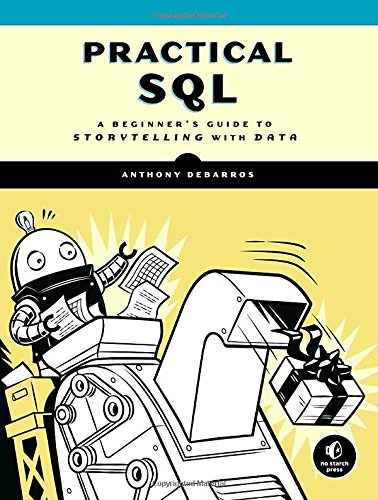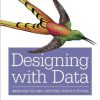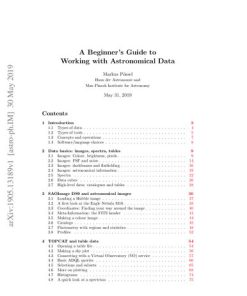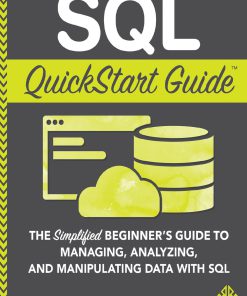Practical SQL A Beginner Guide to Storytelling with Data 2nd Edition by Anthony DeBarros ISBN 1718501072 9781718501072
$50.00 Original price was: $50.00.$25.00Current price is: $25.00.
Practical SQL A Beginner’s Guide to Storytelling with Data 2nd Edition by Anthony DeBarros – Ebook PDF Instant Download/Delivery: 1718501072, 9781718501072
Full download Practical SQL A Beginner’s Guide to Storytelling with Data 2nd Edition after payment

Product details:
ISBN 10: 1718501072
ISBN 13: 9781718501072
Author: Anthony DeBarros
Analyze data like a pro, even if you’re a beginner. Practical SQL is an approachable and fast-paced guide to SQL (Structured Query Language), the standard programming language for defining, organizing, and exploring data in relational databases. Anthony DeBarros, a journalist and data analyst, focuses on using SQL to find the story within your data. The examples and code use the open-source database PostgreSQL and its companion pgAdmin interface, and the concepts you learn will apply to most database management systems, including MySQL, Oracle, SQLite, and others.* You’ll first cover the fundamentals of databases and the SQL language, then build skills by analyzing data from real-world datasets such as US Census demographics, New York City taxi rides, and earthquakes from US Geological Survey. Each chapter includes exercises and examples that teach even those who have never programmed before all the tools necessary to build powerful databases and access information quickly and efficiently. You’ll learn how to: Create databases and related tables using your own data Aggregate, sort, and filter data to find patterns Use functions for basic math and advanced statistical operations Identify errors in data and clean them up Analyze spatial data with a geographic information system (PostGIS) Create advanced queries and automate tasks This updated second edition has been thoroughly revised to reflect the latest in SQL features, including additional advanced query techniques for wrangling data. This edition also has two new chapters: an expanded set of instructions on for setting up your system plus a chapter on using PostgreSQL with the popular JSON data interchange format. Learning SQL doesn’t have to be dry and complicated. Practical SQL delivers clear examples with an easy-to-follow approach to teach you the tools you need to build and manage your own databases. * Microsoft SQL Server employs a variant of the language called T-SQL, which is not covered by Practical SQL.
Practical SQL A Beginner’s Guide to Storytelling with Data 2nd Table of contents:
Chapter 1: Setting Up Your Coding Environment
Installing a Text Editor
Downloading Code and Data from GitHub
Installing PostgreSQL and pgAdmin
Windows Installation
macOS Installation
Linux Installation
Working with pgAdmin
Launching pgAdmin and Setting a Master Password
Connecting to the Default postgres Database
Exploring the Query Tool
Customizing pgAdmin
Alternatives to pgAdmin
Wrapping Up
Chapter 2: Creating Your First Database and Table
Understanding Tables
Creating a Database
Executing SQL in pgAdmin
Connecting to the analysis Database
Creating a Table
Using the CREATE TABLE Statement
Making the teachers Table
Inserting Rows into a Table
Using the INSERT Statement
Viewing the Data
Getting Help When Code Goes Bad
Formatting SQL for Readability
Wrapping Up
Chapter 3: Beginning Data Exploration with SELECT
Basic SELECT Syntax
Querying a Subset of Columns
Sorting Data with ORDER BY
Using DISTINCT to Find Unique Values
Filtering Rows with WHERE
Using LIKE and ILIKE with WHERE
Combining Operators with AND and OR
Putting It All Together
Wrapping Up
Chapter 4: Understanding Data Types
Understanding Characters
Understanding Numbers
Using Integers
Auto-Incrementing Integers
Using Decimal Numbers
Choosing Your Number Data Type
Understanding Dates and Times
Using the interval Data Type in Calculations
Understanding JSON and JSONB
Using Miscellaneous Types
Transforming Values from One Type to Another with CAST
Using CAST Shortcut Notation
Wrapping Up
Chapter 5: Importing and Exporting Data
Working with Delimited Text Files
Handling Header Rows
Quoting Columns That Contain Delimiters
Using COPY to Import Data
Importing Census Data Describing Counties
Creating the us_counties_pop_est_2019 Table
Understanding Census Columns and Data Types
Performing the Census Import with COPY
Inspecting the Import
Importing a Subset of Columns with COPY
Importing a Subset of Rows with COPY
Adding a Value to a Column During Import
Using COPY to Export Data
Exporting All Data
Exporting Particular Columns
Exporting Query Results
Importing and Exporting Through pgAdmin
Wrapping Up
Chapter 6: Basic Math and Stats with SQL
Understanding Math Operators and Functions
Understanding Math and Data Types
Adding, Subtracting, and Multiplying
Performing Division and Modulo
Using Exponents, Roots, and Factorials
Minding the Order of Operations
Doing Math Across Census Table Columns
Adding and Subtracting Columns
Finding Percentages of the Whole
Tracking Percent Change
Using Aggregate Functions for Averages and Sums
Finding the Median
Finding the Median with Percentile Functions
Finding Median and Percentiles with Census Data
Finding Other Quantiles with Percentile Functions
Finding the Mode
Wrapping Up
Chapter 7: Joining Tables in a Relational Database
Linking Tables Using JOIN
Relating Tables with Key Columns
Querying Multiple Tables Using JOIN
Understanding JOIN Types
JOIN
LEFT JOIN and RIGHT JOIN
FULL OUTER JOIN
CROSS JOIN
Using NULL to Find Rows with Missing Values
Understanding the Three Types of Table Relationships
One-to-One Relationship
One-to-Many Relationship
Many-to-Many Relationship
Selecting Specific Columns in a Join
Simplifying JOIN Syntax with Table Aliases
Joining Multiple Tables
Combining Query Results with Set Operators
UNION and UNION ALL
INTERSECT and EXCEPT
Performing Math on Joined Table Columns
Wrapping Up
Chapter 8: Table Design That Works for You
Following Naming Conventions
Quoting Identifiers Enables Mixed Case
Pitfalls with Quoting Identifiers
Guidelines for Naming Identifiers
Controlling Column Values with Constraints
Primary Keys: Natural vs. Surrogate
Foreign Keys
How to Automatically Delete Related Records with CASCADE
The CHECK Constraint
The UNIQUE Constraint
The NOT NULL Constraint
How to Remove Constraints or Add Them Later
Speeding Up Queries with Indexes
B-Tree: PostgreSQL’s Default Index
Considerations When Using Indexes
Wrapping Up
Chapter 9: Extracting Information by Grouping and Summarizing
Creating the Library Survey Tables
Creating the 2018 Library Data Table
Creating the 2017 and 2016 Library Data Tables
Exploring the Library Data Using Aggregate Functions
Counting Rows and Values Using count()
Finding Maximum and Minimum Values Using max() and min()
Aggregating Data Using GROUP BY
Wrapping Up
Chapter 10: Inspecting and Modifying Data
Importing Data on Meat, Poultry, and Egg Producers
Interviewing the Dataset
Checking for Missing Values
Checking for Inconsistent Data Values
Checking for Malformed Values Using length()
Modifying Tables, Columns, and Data
Modifying Tables with ALTER TABLE
Modifying Values with UPDATE
Viewing Modified Data with RETURNING
Creating Backup Tables
Restoring Missing Column Values
Updating Values for Consistency
Repairing ZIP Codes Using Concatenation
Updating Values Across Tables
Deleting Unneeded Data
Deleting Rows from a Table
Deleting a Column from a Table
Deleting a Table from a Database
Using Transactions to Save or Revert Changes
Improving Performance When Updating Large Tables
Wrapping Up
Chapter 11: Statistical Functions in SQL
Creating a Census Stats Table
Measuring Correlation with corr(Y, X)
Checking Additional Correlations
Predicting Values with Regression Analysis
Finding the Effect of an Independent Variable with r-Squared
Finding Variance and Standard Deviation
Creating Rankings with SQL
Ranking with rank() and dense_rank()
Ranking Within Subgroups with PARTITION BY
Calculating Rates for Meaningful Comparisons
Finding Rates of Tourism-Related Businesses
Smoothing Uneven Data
Wrapping Up
Chapter 12: Working with Dates and Times
Understanding Data Types and Functions for Dates and Times
Manipulating Dates and Times
Extracting the Components of a timestamp Value
Creating Datetime Values from timestamp Components
Retrieving the Current Date and Time
Working with Time Zones
Finding Your Time Zone Setting
Setting the Time Zone
Performing Calculations with Dates and Times
Finding Patterns in New York City Taxi Data
Finding Patterns in Amtrak Data
Wrapping Up
Chapter 13: Advanced Query Techniques
Using Subqueries
Filtering with Subqueries in a WHERE Clause
Creating Derived Tables with Subqueries
Joining Derived Tables
Generating Columns with Subqueries
Understanding Subquery Expressions
Using Subqueries with LATERAL
Using Common Table Expressions
Performing Cross Tabulations
Installing the crosstab() Function
Tabulating Survey Results
Tabulating City Temperature Readings
Reclassifying Values with CASE
Using CASE in a Common Table Expression
Wrapping Up
Chapter 14: Mining Text to Find Meaningful Data
Formatting Text Using String Functions
Case Formatting
Character Information
Removing Characters
Extracting and Replacing Characters
Matching Text Patterns with Regular Expressions
Regular Expression Notation
Using Regular Expressions with WHERE
Regular Expression Functions to Replace or Split Text
Turning Text to Data with Regular Expression Functions
Full-Text Search in PostgreSQL
Text Search Data Types
Creating a Table for Full-Text Search
Searching Speech Text
Ranking Query Matches by Relevance
Wrapping Up
Chapter 15: Analyzing Spatial Data with PostGIS
Enabling PostGIS and Creating a Spatial Database
Understanding the Building Blocks of Spatial Data
Understanding Two-Dimensional Geometries
Well-Known Text Formats
Projections and Coordinate Systems
Spatial Reference System Identifier
Understanding PostGIS Data Types
Creating Spatial Objects with PostGIS Functions
Creating a Geometry Type from Well-Known Text
Creating a Geography Type from Well-Known Text
Using Point Functions
Using LineString Functions
Using Polygon Functions
Analyzing Farmers’ Markets Data
Creating and Filling a Geography Column
Adding a Spatial Index
Finding Geographies Within a Given Distance
Finding the Distance Between Geographies
Finding the Nearest Geographies
Working with Census Shapefiles
Understanding the Contents of a Shapefile
Loading Shapefiles
Exploring the Census 2019 Counties Shapefile
Examining Demographics Within a Distance
Performing Spatial Joins
Exploring Roads and Waterways Data
Joining the Census Roads and Water Tables
Finding the Location Where Objects Intersect
Wrapping Up
Chapter 16: Working with JSON Data
Understanding JSON Structure
Considering When to Use JSON with SQL
Using json and jsonb Data Types
Importing and Indexing JSON Data
Using json and jsonb Extraction Operators
Key Value Extraction
Array Element Extraction
Path Extraction
Containment and Existence
Analyzing Earthquake Data
Exploring and Loading the Earthquake Data
Working with Earthquake Times
Finding the Largest and Most-Reported Earthquakes
Converting Earthquake JSON to Spatial Data
Generating and Manipulating JSON
Turning Query Results into JSON
Adding, Updating, and Deleting Keys and Values
Using JSON Processing Functions
Finding the Length of an Array
Returning Array Elements as Rows
Wrapping Up
Chapter 17: Saving Time with Views, Functions, and Triggers
Using Views to Simplify Queries
Creating and Querying Views
Creating and Refreshing a Materialized View
Inserting, Updating, and Deleting Data Using a View
Creating Your Own Functions and Procedures
Creating the percent_change() Function
Using the percent_change() Function
Updating Data with a Procedure
Using the Python Language in a Function
Automating Database Actions with Triggers
Logging Grade Updates to a Table
Automatically Classifying Temperatures
Wrapping Up
Chapter 18: Using PostgreSQL from the Command Line
Setting Up the Command Line for psql
Windows psql Setup
macOS psql Setup
Linux psql Setup
Working with psql
Launching psql and Connecting to a Database
Running SQL Queries on psql
Navigating and Formatting Results
Meta-Commands for Database Information
Importing, Exporting, and Using Files
Additional Command Line Utilities to Expedite Tasks
Adding a Database with createdb
Loading Shapefiles with shp2pgsql
Wrapping Up
Chapter 19: Maintaining Your Database
Recovering Unused Space with VACUUM
Tracking Table Size
Monitoring the Autovacuum Process
Running VACUUM Manually
Reducing Table Size with VACUUM FULL
Changing Server Settings
Locating and Editing postgresql.conf
Reloading Settings with pg_ctl
Backing Up and Restoring Your Database
Using pg_dump to Export a Database or Table
Restoring a Database Export with pg_restore
Exploring Additional Backup and Restore Options
Wrapping Up
Chapter 20: Telling Your Data’s Story
Start with a Question
Document Your Process
Gather Your Data
No Data? Build Your Own Database
Assess the Data’s Origins
Interview the Data with Queries
Consult the Data’s Owner
Identify Key Indicators and Trends over Time
Ask Why
Communicate Your Findings
Wrapping Up
People also search for Practical SQL A Beginner’s Guide to Storytelling with Data 2nd:
Tags:
Anthony DeBarros,Practical SQL,Beginner,Storytelling,Data
You may also like…
Computers - Databases
Practical guide to Oracle SQL, T-SQL and MySQL 1st Edition Preston Zhang
Computers - Databases
Practical SQL A Beginner s Guide to Storytelling with Data 1st Edition Anthony Debarros
Computers - Databases
Computers - Computers - General & Miscellaneous
Technique - Electronics
A Beginner s Guide to Circuits Nine Simple Projects with Lights Sounds and More Dahl












